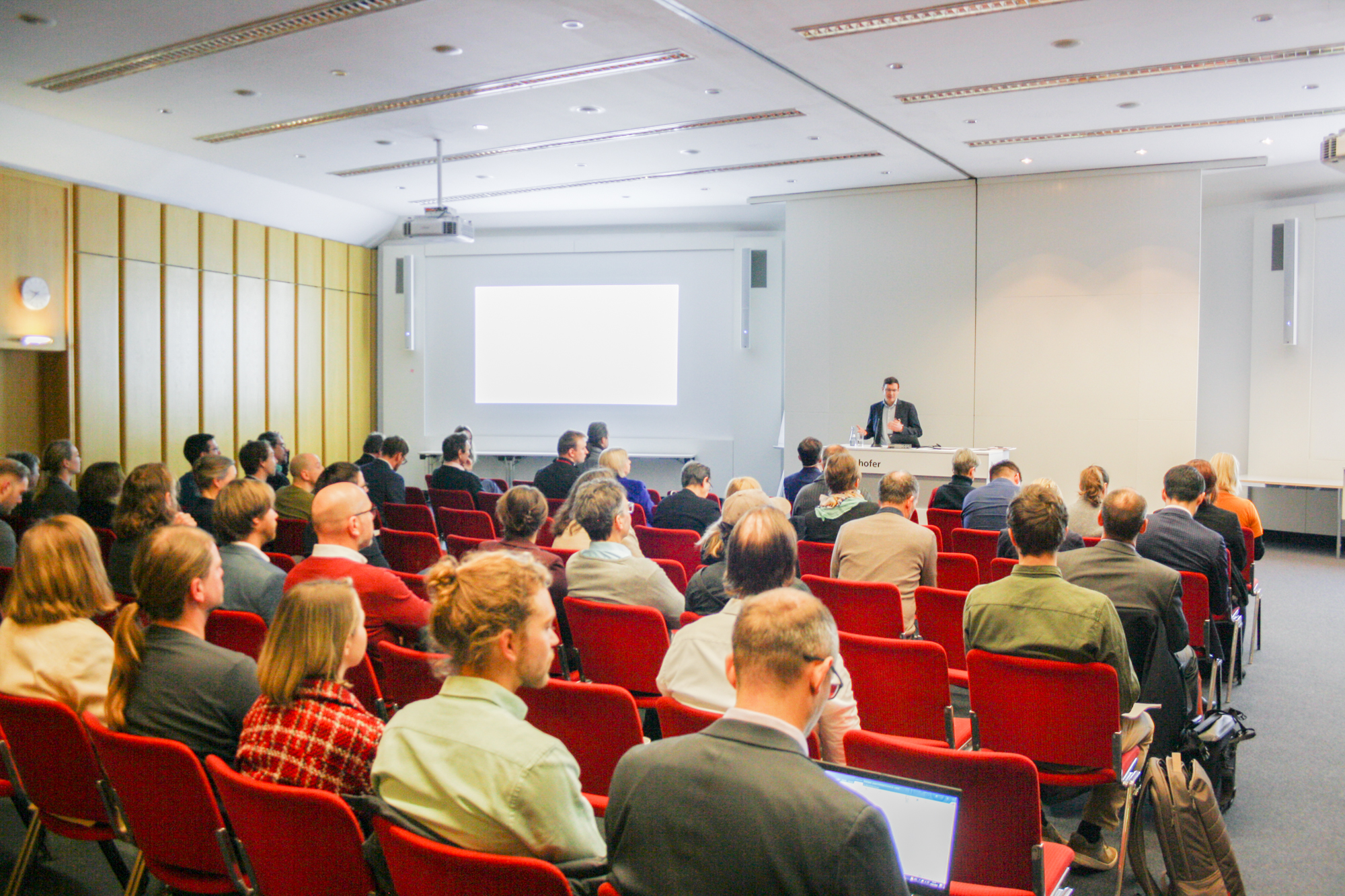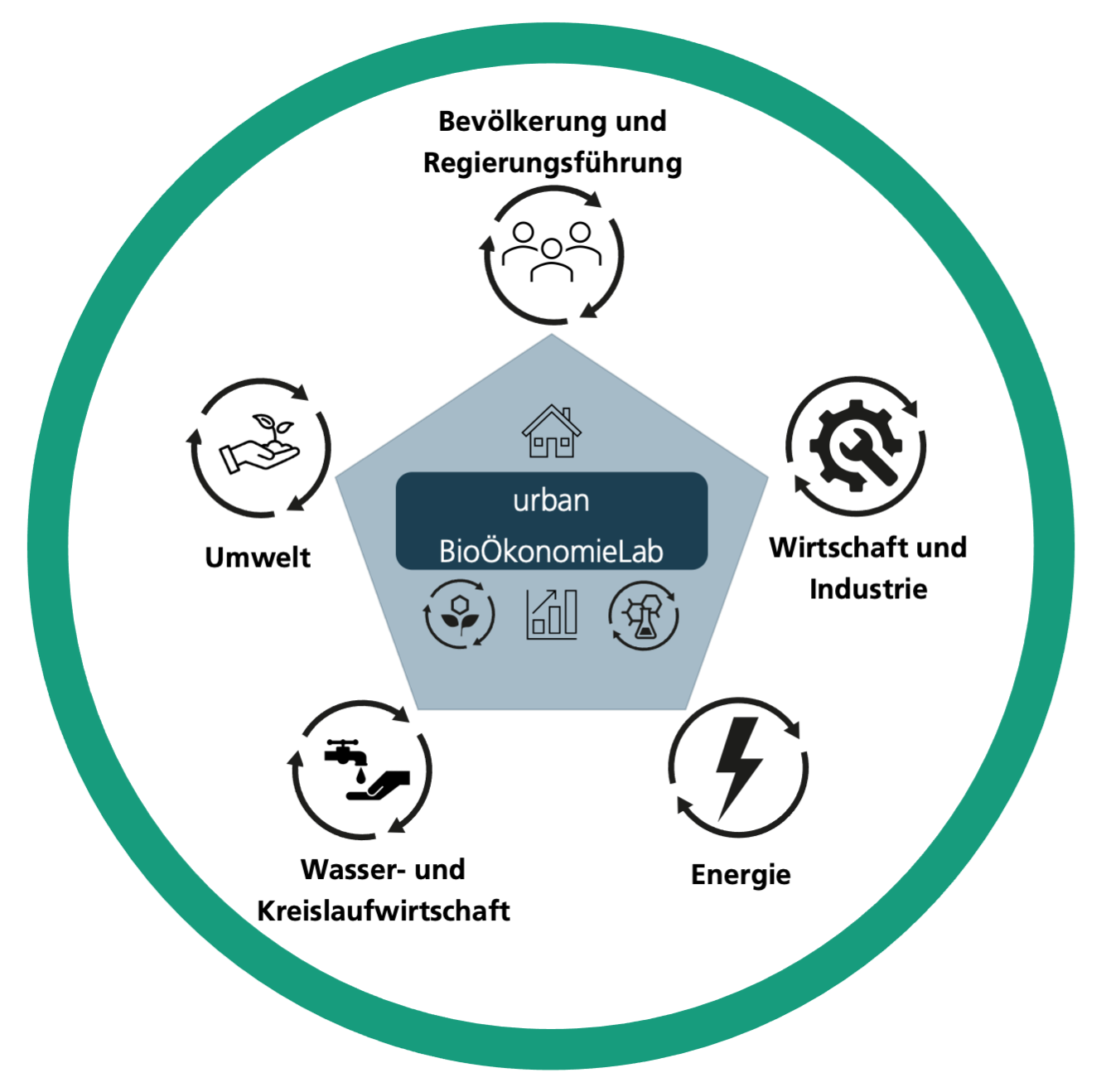Main navigation
The city as a living laboratory for a bioeconomic, sustainable economic area
Baden-Württemberg is leading the way in the transition to a climate-neutral and sustainable economy. One of the projects undertaken in Baden-Württemberg is the Fraunhofer IGB’s "urban BioEconomyLab" project which aims to develop a transformation model and living laboratory to find bioeconomic solutions for the sustainable design of cities and municipal industry. What is new is that the IGB takes a systemic approach, focusing on biobased and circular value creation that uses biomass and CO2 contained in wastewater, waste and exhaust air as raw materials. More and more stakeholders are interested in this holistic approach.
Both urban and rural regions are facing enormous challenges such as reducing the climate-damaging emissions in Baden-Württemberg by 65 percent (compared to 1995) and to achieve greenhouse gas neutrality by 2040. This ambitious goal requires far-reaching measures in the individual sectors concerned: industry, waste and energy management, transport, buildings and agriculture.
The Baden-Württemberg government launched its "Sustainable Bioeconomy for Baden-Württemberg" strategy in 2019 to facilitate the transition to an economy based on renewable and biological resources. One innovative project is the BioEconomyLab, which is coordinated by the Fraunhofer Institute for Interfacial Engineering and Biotechnology IGB in Stuttgart. This is no coincidence as the bioeconomy is a topic close to the hearts of the IGB researchers, whose research focuses specifically on discovering untapped potentials for value creation.
Efficient management of natural resources and a strong business location
"Wastewater, waste and exhaust air - the city and its industrial environment harbour valuable unused residual materials that could be used as raw materials for new products using bioeconomic processes," said Dr. Ursula Schließmann, Deputy Director of the IGB and Coordinator of the institute’s Environment and Climate Protection business area, summarising the basic idea of the project. The project aims to develop resource-efficient management processes, ultimately conserving natural resources and strengthening Baden-Württemberg as a great business location.
Baden-Württemberg’s "Sustainable Bioeconomy" strategy makes active contributions and develops technologies and business models that promote the implementation of the sustainable goals," said Dr. Marius Mohr from the IGB, describing how innovative projects such as the "urban BioEconomyLab" come into existence. The project is funded by the BWPLUS environmental research programme1). "The aim of the project is to make Baden-Württemberg a leading region for a biobased, circular economy," said Mohr, who heads up the water technologies, resource recovery and scale-up innovation field at IGB.
Systemic approach with industrial raw materials

Within the urban BioEconomyLab project, the Fraunhofer IGB is developing a unique transformation model and a living laboratory to find bioeconomic solutions for the sustainable design of cities and municipal industry. "Until now, only individual bioeconomic processes have been investigated and further developed in order to drive forward a climate-neutral economy based on renewable raw material biomass," explained Mohr. "However, the conversion of industrial waste using biotechnological processes in a systemic approach that is holistically designed has never existed before." This is now set to change with urban BioEconomyLab. What makes this project so special is that biobased value creation will, to a large extent, be taking place in the system itself, using biomass and CO2 found in large quantities in wastewater, waste and exhaust air as raw materials.
To this end, the IGB is working with urban pilot regions in Baden-Württemberg, hand in hand with local companies and authorities. Stakeholders from local authorities, politics, science and industry are involved in networking initiatives to exchange experience. "Stakeholders in the analysed regions are involved in the project through workshops and interviews," said Mohr. "Their views and ideas can thus be incorporated into the proposals for a transformation roadmap and the measures it contains. In addition, perspectives will be identified within the framework of the urban bioeconomy.The project also assists in jointly acquiring funds for carrying out the measures identified."
With regard to social acceptance, Schließmann added an important aspect: "Historically, people separated waste streams from the food chain. This made sense for hygienic reasons. Technologies that shorten the chain through natural means – i.e. water and soil – must communicate this "unusual step" in a positive way. The innovations have to be practical, i.e. they must be able to be integrated into peoples’ everyday life without requiring considerable additional effort."
Innovative concept as a model for other regions
But how can the transformation to a sustainable bioeconomy be achieved? "The project aims to develop the BioEconomyLab method and apply it to pilot regions. The successful bioeconomic transformation in these regions can be seen as positive proof that the system works, and the regions can then serve as transformation models," said Mohr. The urban pilot regions will be used to analyse where the potential for the use of a sustainable bioeconomy lies locally. This can, for example, involve the extraction of raw materials from wastewater treatment plants, waste management plants or neighbouring industrial plants as well as measures for utilising these resources, such as for the production of fertilisers, plastics and hydrogen. At the same time, the IGB is developing suggestions for the implementation of bioeconomic processes, materials and products into urban and industrial reality – ideally in the form of closed cycles.
The methodology consists of five steps
In the project, the IGB researchers are further developing their tried-and-tested CityLab® method in order to analyse relevant parameters with regard to bioeconomic material flows and identify fields of action. The core of the methodology is a comprehensive analysis of all urban sectors, including waste and resources, wastewater, energy, industry, transport and administration. With regard to material flows of agricultural and forestry products on the one hand and nutrients and organic residues on the other, interfaces with rural areas are also to be considered.
The method involves five working steps: the initial analysis based on a questionnaire in which indicators and parameters are queried is followed by an evaluation of the identified fields of action and a sensitivity analysis of the local influencing factors. Based on interviews conducted with stakeholders and on-site visits, the IGB researchers develop and prioritise strategic measures. The final stage involves grouping the measures into clusters and transferring them to a roadmap, which serves as the basis for further action by the stakeholders.
Proven evaluation methodology for use in Germany and worldwide
The IGB can draw on many years of experience regarding the evaluation methodology used: for several years, the team headed by Mohr has been involved worldwide in the further development of local material flow management as part of Fraunhofer CityLab® projects. One example being mastering the challenges in the area of water management. It has become clear that active networking is also beneficial. For example, Dr. Markus Wolperdinger, Director of the IGB, is co-chairman of the Baden-Württemberg government’s Sustainable Bioeconomy advisory board, deputy chairman of the German government's Bioeconomy Council and chairman of the Fraunhofer Group for Resource Technologies and Bioeconomy.
The BioEconomyLab project examined three urban regions in Baden-Württemberg as pilot cities: Stuttgart, Mannheim and Karlsruhe. The Stuttgart region was selected to further validate and adapt the developed methodology. The method will then be applied to the other two urban regions to demonstrate the transferability of the methodology. "The project will be completed in 2024 and will have made a significant contribution to the networking of stakeholders in Baden-Württemberg," said Mohr. "The tried-and-tested evaluation methodology will be available to regions that want to become bioeconomy regions in Germany and worldwide."
And the plan for the future? "In the long term, we hope to contribute to the creation of diverse cities and industrial towns that are integrated into ecological cycles and are in harmony with nature and are pleasant places to live in. This will transform cities from nutrient sinks and places where nature has been pushed back to hubs of a circular economy and biodiversity hotspots. In short, to places where people feel good and where air pollution, noise and the waste of raw materials will be a thing of the past," said Mohr.
Footnote:
1) BWPLUS – Baden‑Württemberg Programm "Lebensgrundlage Umwelt und ihre Sicherung" of the Ministry of the Environment, Climate Protection and the Energy Sector, https://um.baden-wuerttemberg.de/de/umwelt-natur/umwelt-und-energieforschung (accessed on: 27th November 2023)
